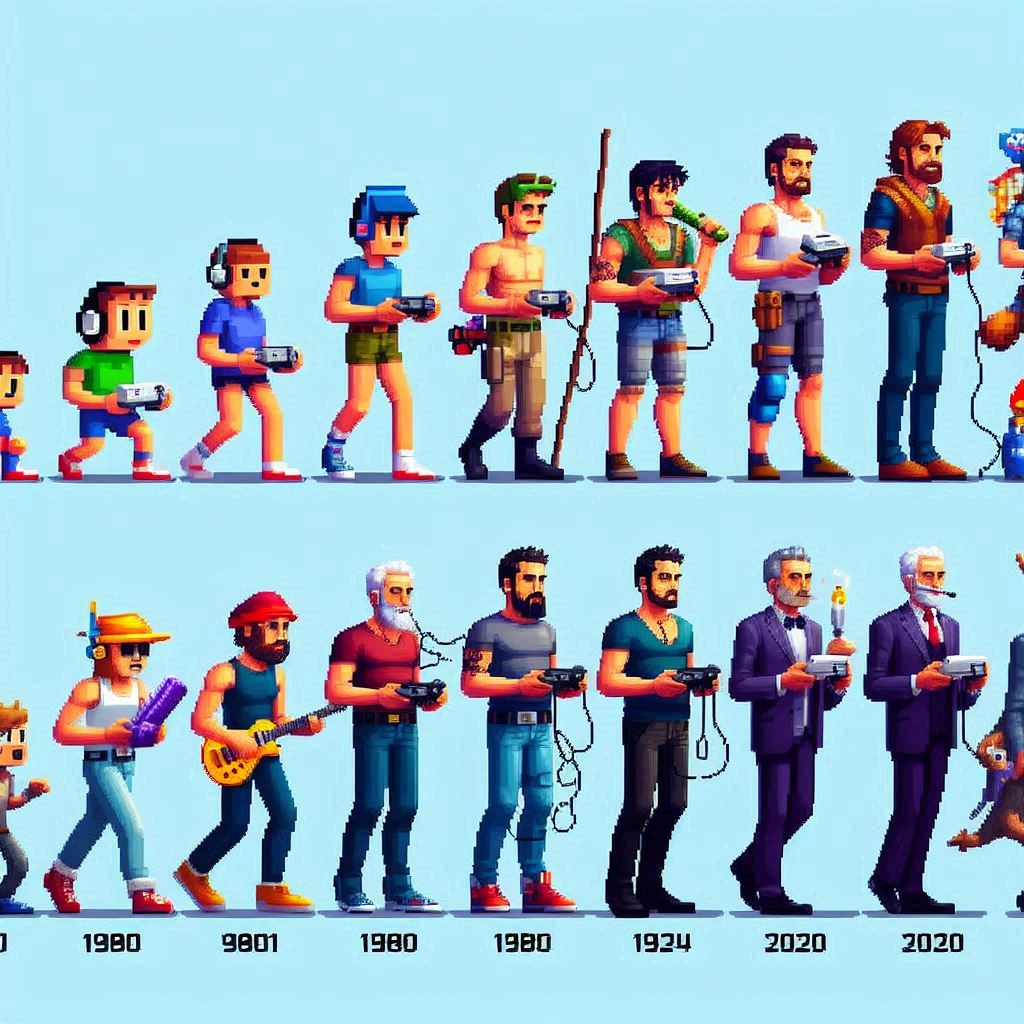Gaming has come a long way since its humble beginnings, and perhaps one of the most visually striking aspects of its evolution is the advancement of gaming graphics. From simple pixelated sprites to breathtaking photorealistic environments, the journey of gaming graphics is a testament to the relentless innovation and technological progress within the gaming industry.
Table of Contents
ToggleIn this blog post, we’ll take a nostalgic trip down memory lane and explore the fascinating visual history of gaming graphics, from the early days to the cutting-edge technologies of today.
The Pixel Era
In the beginning, gaming graphics were limited by the constraints of hardware technology. Early video game consoles like the Atari 2600 and the Nintendo Entertainment System (NES) relied on simple 8-bit graphics composed of blocky pixels. Games like “Pac-Man” and “Space Invaders” epitomized this pixelated aesthetic, charming players with their retro simplicity and addictive gameplay.
The 16-bit Renaissance
The 16-bit era marked a significant leap forward in gaming graphics, with consoles like the Sega Genesis and the Super Nintendo Entertainment System (SNES) pushing the boundaries of visual fidelity. Games like “Super Mario World” and “Sonic the Hedgehog” showcased vibrant colors, smooth animations, and detailed sprites, immersing players in rich and colorful worlds.
The Transition to 3D
The advent of 3D graphics revolutionized gaming, ushering in an era of immersive worlds and lifelike characters. The Sony PlayStation and the Nintendo 64 were at the forefront of this transition, introducing players to fully realized 3D environments and polygonal character models. Games like “Super Mario 64” and “Final Fantasy VII” demonstrated the potential of 3D graphics to create expansive and interactive gaming experiences.
The Rise of Realism
As technology continued to advance, so too did the realism of gaming graphics. The sixth generation of consoles, including the PlayStation 2, Xbox, and GameCube, introduced players to cinematic visuals and sophisticated rendering techniques. Games like “Grand Theft Auto: San Andreas” and “Metal Gear Solid 2: Sons of Liberty” pushed the boundaries of graphical fidelity, blurring the line between reality and virtuality.
The HD Era
With the advent of high-definition gaming, developers gained access to more powerful hardware capable of rendering incredibly detailed and lifelike graphics. The PlayStation 3, Xbox 360, and later the PlayStation 4 and Xbox One ushered in an era of high-definition gaming, with games like “The Last of Us” and “Uncharted 4: A Thief’s End” setting new standards for visual realism and immersion.
The Age of Photorealism
Today, gaming graphics have reached unprecedented levels of realism, thanks to cutting-edge technologies like ray tracing, photogrammetry, and real-time rendering. The PlayStation 5, Xbox Series X, and high-end gaming PCs are capable of delivering breathtaking visuals that rival those of Hollywood blockbusters. Games like “Cyberpunk 2077” and “Red Dead Redemption 2” showcase the pinnacle of visual fidelity, immersing players in stunningly realistic worlds teeming with detail and atmosphere.
Testament
The evolution of gaming graphics is a testament to the ingenuity and creativity of game developers, who have continually pushed the boundaries of technology to create ever more immersive and visually stunning gaming experiences.
From the simple pixels of the past to the photorealistic worlds of the present, gaming graphics have undergone a remarkable transformation, captivating players and sparking imaginations around the world. As we look to the future, one thing is certain: the visual evolution of gaming graphics shows no signs of slowing down, promising even more breathtaking experiences for gamers to enjoy.







One Comment
I like this website it’s a master piece! Glad I found this ohttps://69v.topn google.Blog monry